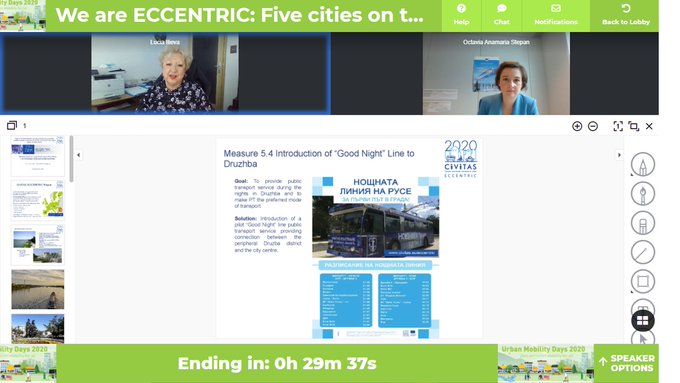The networking highlights for the European sustainable mobility community, the annual CIVITAS Forum and the SUMP conference have always gathered a great number of participants to exchange, network and create new connections.
In 2020 both events were merged for the very first time into the European Urban Mobility Days - and then shifted online due to Covid-19.
Is it possible to create an inspiring network event online, without the human interactions? Sharing knowledge and experiences in virtual spaces, that's something we have practiced since the outbreak of the pandemic in spring 2020, but can we create a conference atmosphere beyond a webinar?
The event started on 29 September with 2000 registered participants, 4 days packed with plenaries, parallel sessions and side events – and the virtual conference platform didn’t fail. What a relief!
Most important for the cities, as well as for the different sustainable mobility experts was of course to hear about the future for sustainable mobility in Europe and several representatives from the EU Commission were present to discuss and encourage participants to continue their efforts towards a sustainable and clean transport system. EU Commissioner for Transport Adina Vălean made clear in her opening speech, how sustainable mobility and inclusivity are key to achieving the European Green Deal and that transport emissions must decrease by 90% to achieve the 2050 targets. She also reminded about the open Horizon 2020 Green deal calls and encouraged the participants to prepare mature projects to be submitted and directly contribute to the sustainable recovery of Europe.
On the second day, Normunds Popens, Deputy Director General of DG REGIO mentioned what is very crucial for the Baltic Sea Region: transport and mobility is currently a bottleneck and the increasing cargo transport in urban area puts additional pressure on the system. He stressed, that sustainable mobility planning needs to look at the urban-functional areas, including the rural “commuting” areas, to achieve sustainable results in decreasing emissions.
Despite a few minor hick-ups, the conference worked out very well. There was a virtual exhibition area with the possibility to chat at the stands, but most successful was the active social media contributions from participants, speakers and organisers, which made it possible to actually interact, share, like and comment on presentations, topics, sessions and speakers – and this was accessible also for people who did not get a place in the conference.
Of course the social programme of a conference cannot be replaced virtually and surely many participants became a bit sentimental of missing out meeting colleagues from all over Europe, but nevertheless, it was a very successful attempt and left participants inspired ( and hoping for a real-life encounter in the future again)!
